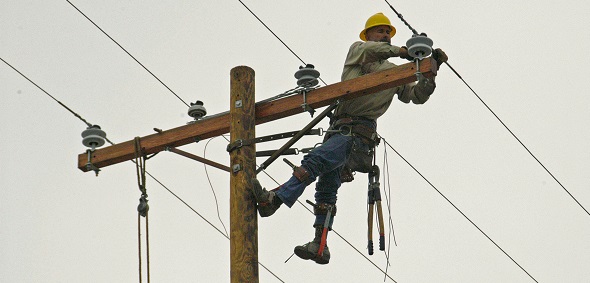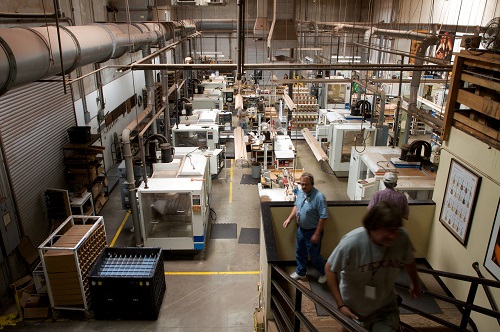Over the past year or so, it appears that the health and safety culture has been heavily scrutinised both in the press and by the public. Health and safety is being blamed for questionable decisions in the workplace left right and centre, which has called for the Health and Safety Executive to call for putting a stop on the health and safety blame game. We recently wrote a blog post about this titled 'Is Health and Safety Taking the Blame' discussing all these points, and since then it appears health and safety have come under fire yet again.

This time, the focus is around health and safety ruining childhood. In this piece in The Telegraph Judith Hackitt, head of the Health and Safety Executive called for children not to be wrapped in cotton wool, stating that they must be allowed to hurt themselves during play to avoid them becoming 'risk naive' in later life.
In another Telegraph piece, TV personality Bear Grylls has claimed that the health and safety culture is ruining childhood. He argues that children should be banned from playing computer games and should take more risks in the outdoors.
Indeed, both articles make good points about the digital world we live in. It's undeniable that spending too much time in front of a laptop of TV screens is detrimental to children - and we completely agree that there is such a wealth of experience and knowledge gained by playing outdoors and actually engaging face to face with your peers. Children should go out and play whilst still taking advantage of the incredible and educational technological developments we're fortunate enough to experience. They should be allowed to experience things first hand in the great outdoors...But is health and safety culture ruining childhood? We certainly don't think so.
On the contrary, in fact. The importance of health and safety legislations should be ingrained in our children from a young age. It's very important we don't turn children against the health and safety culture because it will be so dramatically important for them in life. Indeed, whether you work on a construction site or in an office - every business establishment has set health and safety legislations which are put in place to protect our lives, and indeed the lives of others.
It is far too often that we hear of tragic accidents in the workplace due to breaches of health and safety - either resulting in serious injury or at the worst case, death. Companies are being sued for thousands of pounds weekly due to not complying with health and safety - though we completely agree occasionally people will use health and safety as an excuse for a bad decision - it is vital that legislations are respected and followed.
We think that children should be allowed to be children and encouraged to grow and play outdoors, but they should be urged to respect the health and safety rules and legislations put in place to protect them. What do you think? We'd love to hear your views! Tweet us @LabelSourceUK to continue the discussion.
If you thought asbestos was a thing of the past, think again. Before the turn of the millennium, asbestos was used in all types of building for its insulative and fireproof properties, and while we now know how harmful it can be to human health, asbestos is still commonly found in homes, offices, schools, hospitals, and other buildings.
Here are some sobering facts from the Health and Safety Executive:
- 20 tradespeople die every week as a result of previous exposure to asbestos
- 5,000 workers are killed by asbestos-related diseases every year - fewer people are killed in road accidents each year
- Asbestos can be responsible for many life-threatening lung problems, including lung cancer, mesothelioma, asbestosis and pleural thickening
The HSE is currently running a #BewareAsbestos campaign to raise awareness of asbestos, the dangers associated with it, and the fact that it is still very common in the present day. Any building that was constructed before the year 2000 could potentially contain asbestos, and if it does, this poses a risk to everybody, especially any tradespeople (electricians, plumbers, contractors, etc.) who carry out work in the building.
Here at Label Source, we sell a wide range of asbestos warning signs that can be used to warn workers and the general public of asbestos problems on your premises. Here are some of the signs we can provide:

Click here to see the rest of Label Source's asbestos signs.

'Corporate manslaughter' is a phrase that we hear all too often in the health and safety industry. It feels like we see a new report about fatal negligence every week, and if you've been reading these stories as regularly as we have, you're no doubt wondering exactly what 'corporate manslaughter' is.
In a nutshell, 'corporate manslaughter' is a crime of which companies and organisations may be convicted if they are found to have caused (or failed to prevent) the death of a worker. If your company fails to follow health and safety regulations, and this negligence leads to the death of one of your colleagues, then your company may well be charged with corporate manslaughter.
One recent example (reported earlier this week on the HSE website) is the case of Jason Pennington, a 42-year-old construction worker from Lancashire who died after falling through a skylight onto a concrete floor. His employer, Peter Mawson, has been sentenced to eight months in prison, 200 hours of unpaid work, and two years' suspension. He must also pay costs of £31,504.77, and he is legally obliged to advertise the accident on his company's website for a set period of time, as well as taking out a half-page spread in the local newspaper. Furthermore, Mawson's company (Peter Mawson Ltd) has itself been fined a total of £220,200.
Corporate manslaughter has been part of UK law since 2008, and the above story demonstrates just how serious the penalties can be. Of course, as we've pointed out before, the risk of death alone should be incentive enough for business owners - if you don't put up the right safety signs and make sure everyone is working safely, you are putting human lives at risk. Don't let your company's name be sullied by corporate manslaughter charges!

This year marks the 40th anniversary of the Health and Safety Executive (HSE), and the organisation is using this auspicious occasion to appeal to businesses in Wales and the rest of the UK.
In a press release - published earlier this week - the HSE stated that worker wellbeing should be the "top priority" for businesses in 2015, citing the following statistics:
- 7 people in Wales lost their lives at work over the course of 2013/14
- A further 4,291 people in Wales suffered worked-related injuries over that same period
- Some 56,600 people in Wales were made ill through their work over the same period
- 2013/14 statistics for the entire UK: 133 deaths at work, more than 79,500 work-related injuries, and over 1.1 million people made ill through work
These numbers are actually an improvement on the previous year, but while the world of work does appear to be getting safer, the fact remains that too many people are being put in unnecessary danger.
If you are an employer, we urge you to follow the HSE's advice and put the health and safety of your workers ahead of all other concerns. Here are a few ways in which to do this:
- Put up the correct safety signs where necessary. Ensure that the signs are as visible and as easy-to-read as possible.
- Have any electrical installations tested regularly by a certified inspector to ensure their continued safe operation.
- Think carefully about hygiene, particularly in bathrooms, toilets and kitchen areas. Ensure that all employees practise good hygiene.
- Familiarise all employees with emergency procedures - what to do if there is a fire, who to call in the event of a medical emergency, etc. We supply of health and safety posters for this purpose.
Health and safety, for the most part, is nothing more than common sense, but employers must be cautious and attentive to keep their employees safe. Don't let your company add to the HSE's injury total for 2015!
As suppliers of health and safety labels, signs and tags, it is well within our interest here at Label Source to be on top of health and safety news. In the past few month there's certainly been some questionable 'health and safety' decisions that have made the press! For example, a Grimsby fish and chips establishment was featured in the news for supposedly refusing to allow a customer to put salt on her own fish and chips due to health and safety reasons. Does this seem a little far fetched to you?
Well, that's because it is. In 2012, the Health and Safety Executive (HSE) set up a 'myth busting' panel who work to ensure health and safety rules and legislations are not used irrationally, and that health and safety is not to be used as an excuse for decisions made by various establishments. The HSE myth-busters concluded that this was not, in fact, a breach of their health and safety rules - but rather they weren't sure where their customers hands had been!
The HSE called for 2015 to be the year that we stop 'blaming health and safety for poor or over-the-top decisions'.
In the press yesterday was the story of Mango, the much-loved tabby cat who lived in the Tesco in Tiverton, Devon for four years before he was apparently 'ejected' and carreid outside in the rain to his new plastic kennel. There are rumours online about Mango having breached Tesco's health and safety regulations, which is why he was removed - but a spokesman for the store has completely denied this claim, stating "Mango is very welcome and much loved by our customers in Tiverton. He is often seen in our foyer and we have invested in a kennel for him to make him feel more comfortable." This is just another example of the health and safety blame game - though Tesco themselves didn't claim Mango breached their health and safety regulations - others were quick to dismiss the decision as another silly health and safety rule.
As providers of health and safety signs, we must agree with the HSE's plea to cut down on using health and safety as an excuse. After all, health and safety regulations are put in place to help save lives and protect people - not by any stretch of the imagination to stop people living them. Make sure your business is sticking to health and safety regulations without going over the top by having the correct safety signs in place to avoid confusion. What are your thoughts on this situation? We'd love to hear them! Tweet Label Source and let us know.